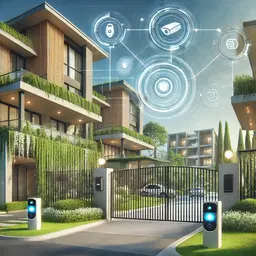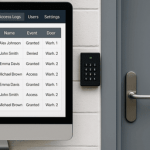
In multi-family housing complexes, security is a top priority. These residential communities face unique challenges, from protecting shared spaces to ensuring the safety of numerous residents with diverse lifestyles. An advanced intrusion detection system (IDS) is essential for securing these properties and providing peace of mind for both residents and property managers. This article explores why the multi-family housing industry needs robust intrusion detection systems and how these solutions can enhance security, efficiency, and tenant satisfaction.
k
k
Why Multi-Family Housing Needs Intrusion Detection Systems
1. Preventing Unauthorized Access
Multi-family housing complexes often have multiple points of entry, including lobbies, garages, and back doors. These access points can become targets for unauthorized entry. Intrusion detection systems provide a proactive solution by monitoring these areas and alerting property managers or security teams to suspicious activity in real time. This helps prevent break-ins and unauthorized access to residents' homes.
2. Enhancing Resident Safety
Safety is a primary concern for residents. An intrusion detection system acts as a first line of defense against potential threats, ensuring that residents feel secure within their community. Whether it’s detecting forced entry attempts or identifying movement in restricted areas, these systems keep residents safe and informed.
3. Protecting Shared Spaces
Multi-family housing complexes often include shared spaces like gyms, swimming pools, and parking areas. These amenities are valuable to residents but can also become targets for theft or vandalism. Intrusion detection systems monitor these areas, ensuring that only authorized individuals have access and that property damage is minimized.
4. Reducing Liability
A well-implemented IDS can reduce liability for property managers and landlords. By deterring criminal activity and providing documentation through alerts and logs, these systems can protect property owners from legal disputes arising from security breaches.
5. Supporting Insurance Compliance
Many insurance providers offer lower premiums to properties with robust security measures in place. Installing an intrusion detection system demonstrates a commitment to safety and can result in significant savings on insurance costs.
k
k
Key Features of Effective Intrusion Detection Systems for Multi-Family Housing
1. Motion Detection
Advanced motion sensors can differentiate between harmless movements, like animals or weather-related activity, and genuine threats. This minimizes false alarms and ensures a quick response to real incidents.
2. Perimeter Protection
Perimeter sensors and alarms safeguard the exterior boundaries of the property, preventing unauthorized access before intruders can reach residential units.
3. Integration with Video Surveillance
When paired with video surveillance systems, intrusion detection becomes even more powerful. Cameras can be triggered to record when a potential intrusion is detected, providing visual evidence for investigations.
4. Remote Monitoring
Modern IDS solutions allow property managers to monitor their systems remotely through mobile apps or web platforms. This ensures they can respond to alerts even when off-site, providing round-the-clock security.
5. Customizable Alerts
Intrusion detection systems can send customizable alerts via email, text, or app notifications, ensuring that the right personnel are notified immediately in case of an incident.
k
k
Benefits of Intrusion Detection Systems in Multi-Family Housing
Peace of Mind for Residents
Residents want to know their homes are secure. An IDS provides that assurance, creating a sense of trust and comfort in their living environment.
Increased Tenant Retention
Satisfied residents are more likely to renew their leases. By investing in security measures like intrusion detection, property managers can enhance tenant retention rates and attract new residents.
Deterrence of Criminal Activity
The mere presence of an intrusion detection system can deter would-be intruders. Visible signage and security devices signal to potential criminals that the property is well-protected.
Streamlined Security Management
With centralized monitoring and automated alerts, property managers can efficiently oversee security without the need for extensive manpower. This streamlines operations and reduces costs.
Improved Community Reputation
A safe, secure property is a desirable property. Implementing an IDS can boost the reputation of a multi-family housing complex, making it a preferred choice for prospective tenants.
k
k
Emerging Trends in Intrusion Detection Systems
AI-Driven Detection
Artificial intelligence is enhancing the capabilities of IDS technology. AI algorithms can analyze patterns of movement, recognize suspicious behavior, and reduce false alarms, improving system reliability.
Smart Home Integration
Intrusion detection systems are increasingly integrating with smart home devices. Residents can control their security settings, receive alerts, and monitor their units through a single app, adding convenience and customization.
Cloud-Based Solutions
Cloud-based IDS platforms enable remote monitoring and system updates, ensuring that security measures are always up to date and accessible.
k
k
Conclusion: Securing Multi-Family Housing with Intrusion Detection Systems
For multi-family housing, security is a key factor in tenant satisfaction, property management efficiency, and overall community well-being. Intrusion detection systems provide a proactive, reliable solution for safeguarding residents and assets while enhancing the appeal of the property. From preventing unauthorized access to protecting shared spaces, IDS technology is an investment in safety, trust, and operational success.
If you’re in the multi-family housing industry and want to learn how advanced intrusion detection systems can benefit your property, contact SSP today. Let us help you design and implement a tailored security solution to meet your needs.


